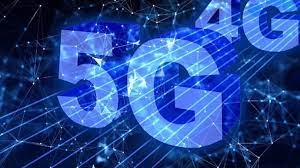Living standards in rural India can be improved, which could be the biggest contributing factor to the economy.
5G is the 5th generation mobile network which is an ingenious and powerful innovation designed to connect everyone and everything together virtually, including machines, objects, and devices. 5G promises a data speed of about ten times in comparison to 4G. At the peak, internet speeds on 5G could touch up to 20 Gbps. Along with that, it promises near-zero latency which means the response time is almost instant. With its increased energy efficiency, spectrum efficiency, and network efficiency, about 1 million devices can be connected with 5G within a range of 1 square km. Higher performance, improved efficiency, and cheaper data rates shall empower the user experience and connect new industries.
With the ever-increasing number of internet users, 5G can transform each and every Indian household. Living standards in rural India can be improved, which could prove to be the biggest contributing factor to the economy. The success of every initiative of government lies within its implementation. The Indian Government’s project “Bharat Net,” aims to provide high-speed internet in rural areas with about one crore free Wi-Fi hotspots. 64% of the total population of India still resides in rural areas. With complete access to good quality internet, the rural areas can be completely developed. Education quality and basic sanitary awareness can be enhanced greatly using 5G. If implemented well, 5G can transform Rural India entirely.
5G has the potential not only to revolutionize industrial production but also the potential to create those industry verticals, which are unimaginable today. IoT combined with 5G can make industrial production much more efficient, error-free, and profitable. The autonomous vehicle industry shall also boom with the advent of 5G. The other sectors that will be impacted by 5G includes Education, Healthcare, Agriculture, Drones, Artificial Intelligence, IT, Data Analytics, Robotics, Augmented & Virtual Reality, Metaverse, and so on. In the Indian context, agriculture, and healthcare are crucial sectors that have a direct impact on the economy. Agriculture can be enhanced with 5G-linked machinery and sensors to inspect crop health and production. The government should make the technology accessible at affordable prices for the farmers to utilise.
5G can be a literal lifesaver when it comes to emergency health care services. With the improved quality of communication, lives could be saved remotely with first aid services under the guidance and control of an expert. 5G also opens up possibilities for new healthcare services like robotic surgery and automated health check-ups.
Integrated with 5G, AR-VR technology can generate various great use cases. For Instance, Immersive learning with AR-VR will make education more interesting and difficult concepts can be learnt with 3D visualisation. The remote rendering will give a boost to affordable smartphone-based Augmented and Virtual Reality learning. This will democratise quality learning and will help in bridging the digital divide created by High-End AR/VR devices. Virtual Reality can also support the autonomous vehicle industry. A Sweden-based transport company recently demonstrated remote driving of real vehicles from a distance of 1000 km. AR-VR in combined with 5G can also ease industrial operations. Real-time remote assistance from different locations will do away with visiting the plant – it will save time, reduce costs, and will increase productivity. Other industries like tourism, healthcare, training, skill development, and entertainment shall also be empowered by AR-VR technology to boost revenues and generate more employment opportunities with better-skilled manpower.
Conclusion
The AR-VR-based education learning demonstration by our Prime Minister during the 5G launch at Pragati Maidan on Oct 22nd, demonstrates the Government’s seriousness regarding the adoption of this technology. Though 5G has countless applications, the immediate use cases are limited which could become a stumbling block to India’s 5G buildout. Many solutions and 5G tools need to be innovated to put this powerful network into use. Most of the available solutions are either too exorbitant in price or inaccessible to use. The Government needs to encourage and incentivise ingenious minds and start-ups to work on feasible solutions to make the best out of 5G. For instance, The Indian start-up TechXR Innovations has devised an affordable XR controller which proves to be a key to the metaverse for the common man of India. The device has the potential to play a major role in making technology affordable and accessible to students from rural backgrounds. India needs cost effective innovations to make the best use of 5G technology.
Prashant Mishra is Founder and Director of TECHXR innovations and a former revenue service officer.

